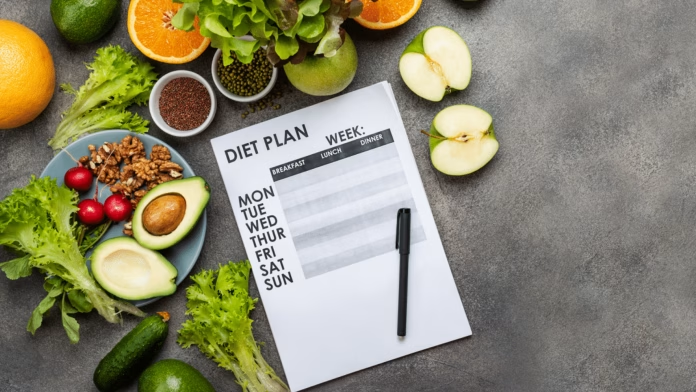High-Intensity Interval Training (HIIT) has become a popular choice for individuals looking to burn fat, build muscle, and improve their overall fitness. However, to maximize the benefits of HIIT workouts, it’s crucial to pair them with the right diet plan. In this comprehensive guide, we will explore the best diet strategy for HIIT, providing you with the knowledge and tools necessary to achieve your weight loss and health goals.
Understanding the Science Behind a HIIT Diet:
A successful HIIT diet revolves around maintaining a balanced approach that emphasizes the consumption of protein, healthy fats, and complex carbohydrates. This dietary approach is based on the principle of consuming fewer calories than you burn, promoting weight loss. However, it’s important to note that calorie counting alone is insufficient. To support your body’s needs during and after HIIT workouts, it’s essential to consume the right types of foods.
Defining a Typical HIIT Workout:
A standard HIIT workout consists of several rounds of high-intensity movements followed by short periods of lower-intensity movements. The goal is to elevate your heart rate to at least 80% of your maximum heart rate. HIIT sessions usually last around 30 to 60 minutes.
Macronutrients in a HIIT Diet:
- Protein: Protein plays a vital role in muscle repair and growth. It also helps you feel full and satisfied for longer, reducing the likelihood of overeating. Good sources of protein include lean meats, poultry, fish, eggs, tofu, and legumes.
- Healthy Fats: Healthy fats are essential for hormone regulation, brain function, and energy. They also contribute to feelings of satiety. Incorporate sources such as nuts, seeds, olive oil, and fatty fish into your diet.
- Complex Carbohydrates: Complex carbohydrates provide the necessary energy for your HIIT workouts. They also help regulate blood sugar levels and keep you feeling satisfied. Opt for whole grains, fruits, vegetables, and legumes as sources of complex carbohydrates.
It is advisable to consult a dietitian to determine the appropriate ratio of macronutrients based on your specific body and health requirements.
How a HIIT Diet Facilitates Weight Loss:
A well-designed diet for HIIT supports weight loss by providing your body with the right types of foods to enhance your workouts. By following a balanced diet that emphasizes protein, healthy fats, and complex carbohydrates, you’ll experience improved satiety, reducing the likelihood of overeating. Additionally, this diet helps boost your metabolism, making it easier to burn fat and build muscle.
Tips for Following a HIIT Diet:
- Post-Workout Nutrition: Consume a post-workout meal consisting mostly of carbohydrates with a 3:1 carbohydrate-to-protein ratio. This combination supports muscle recovery and may enhance your performance in subsequent workouts.
- Pre-Workout Nutrition: Ensure you have a well-rounded, nutritious meal containing moderate-to-high carbohydrates and protein three to four hours before your HIIT workout. Follow this with a protein– and carbohydrate-rich snack within 30 minutes after your workout.
- Choose Digestible and Slow-Release Carbs: Opt for whole-grain bread, oatmeal, and nuts as sources of digestible and slow-release carbohydrates. Pair them with lean protein sources like chicken, fish, or Greek yogurt.
- Adjust Carb Intake with Rest Time: As your rest time between intervals decreases each week, reduce your carbohydrate intake accordingly. This strategy synergizes with your training to help you achieve a shredded physique. In the final week, aim for 0.5 grams of carbs per 450 grams of body weight.
- Pre-Workout Snacks: Consume a snack rich in carbohydrates before your HIIT workout to sustain energy levels. Suitable options include a banana with nuts, oatmeal with almond milk, berries with nuts, or a granola bar.
- Stay Hydrated: Prioritize proper hydration before, during, and after your HIIT workouts. If you engage in activities lasting an hour or more, consider replenishing electrolytes with a sports drink.
Common Mistakes to Avoid:
- Avoid Relying on Processed Foods: Processed and packaged foods often contain added sugars and unhealthy fats, which can hinder your progress.
- Don’t Exclude Entire Food Groups: Each food group provides essential nutrients that your body needs. Instead, focus on consuming nutrient-dense foods that fuel your body for optimal performance.
- Hydration: Ensure you hydrate properly before, during, and after your HIIT workouts to support optimal performance and recovery.
Tracking Your Progress:
Tracking your progress is crucial for achieving your weight loss goals. Start by measuring your weight, body fat percentage, and waist circumference. Record details of your workouts, including exercise type, duration, and intensity. Keep a food diary to monitor your eating habits and make necessary adjustments to align with your goals.
Managing Hunger and Cravings:
Hunger and cravings can pose challenges when following a HIIT diet. To manage hunger, aim to consume small, frequent meals throughout the day to keep your metabolism active. Each meal should include protein and healthy fats to promote satiety. To handle cravings, drink water or tea, or engage in non-food-related activities, such as taking a walk or connecting with a friend.
A well-designed diet strategy for HIIT can significantly enhance your fat loss and muscle-building journey. By focusing on the right macronutrients and appropriately timing your meals around your workouts, you’ll accelerate your progress and improve your overall health. Remember to listen to your body, track your progress, and manage hunger and cravings effectively. With this comprehensive guide, you have all the tools you need to achieve your fitness goals and enjoy improved well-being. So, go forth and conquer your HIIT journey!





